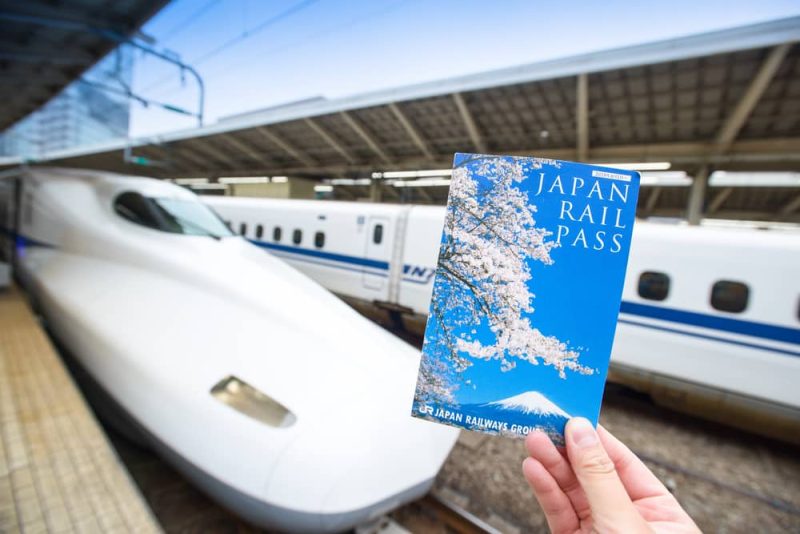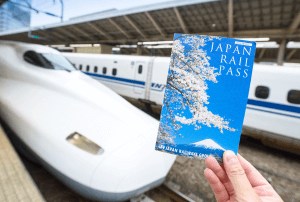Choosing between the Japan Rail Pass and IC cards like Suica, Pasmo, or ICOCA can impact your travel budget and convenience.
Here we break down the differences so you can pick the best option for your itinerary.
Table of Contents
Japan Rail Pass Overview

The JR Pass is a prepaid pass designed for international tourists in Japan.
It gives you unlimited travel with free seat reservation on JR trains throughout Japan and on the entire Shinkansen network, most JR buses, and the JR ferry to Miyajima.
Each JR Pass is a single ticket and you can select from 7, 14, or 21 days validity.


Unlimited access to transportation across Japan for 7, 14, or 21 days on:
- All Shinkansen trains
- Rapid and Local JR trains
- JR bus and ferry services
- Airport Transfers
A single ticket, huge savings.
IC cards Overview

IC cards are preloaded tap cards used for local public transport, including the metro and buses. They can also be used to pay Shinkansen and Limited Express trains, but requires some set-up.
You can also use IC cards to make small purchases from some vending machines, shops, and restaurants.
Pros and Cons: JR Pass vs. IC Cards
Here’s a clear overview of the main pros and cons of the 2 options:
| Pros | Cons | |
|---|---|---|
| JR Pass |
|
|
| IC Cards |
|
|
When Is it Convenient to Use Each Option?
The most convenient option depends on a number of factors including your itinerary, type of trip, and amount of time you have.
Here’s an idea of which option is best depending on your situation:
| Travel option | JR Pass | IC card |
|---|---|---|
| Short visits | ✔️ | |
| Long visits | ✔️ | |
| Short journeys | ✔️ | |
| Long distance travel | ✔️ | |
| Visiting 1-2 cities | ✔️ | |
| Visiting 3+ cities | ✔️ | |
| Travel on Shinkansen | ✔️ | |
| Using the metro | ✔️ | |
| Seat reservation | ✔️ | |
| First class | ✔️ |
Combining the Japan Rail Pass & IC Cards
Using both the Japan Rail Pass and an IC card is the most practical way to travel around Japan. Here’s why:
They cover different systems
The JR Pass works only on JR-operated trains, including:
- Shinkansen bullet trains
- Limited Express trains
- JR train lines
You can use IC cards to travel more comfortably when the JR Pass does not allow you to:
- Non-JR lines, city subways (e.g., Tokyo Metro, Toei), local buses
- Private railway companies (e.g., Keio, Hankyu, Kintetsu)
- Buses that are not part of the JR network
Save time and effort
With a JR Pass you can save money and avoid having multiple tickets.
For journeys that are not covered by the JP Pass, you can use an IC card instead of buying numerous tickets.
Greater flexibility
The JR Pass offers greater flexibility:
- Unlimited travel
- Hop on and off when you like
- Missed train? No problem.
- Change your itinerary whenever you want
An IC card is also ideal if your travel plans change. You might:
- Decide to take a subway instead of a JR train
- Take a bus ride to a museum or remote temple
- Stop at a convenience store and grab a snack
With a JR Pass and an IC card, you’re ready for anything.
